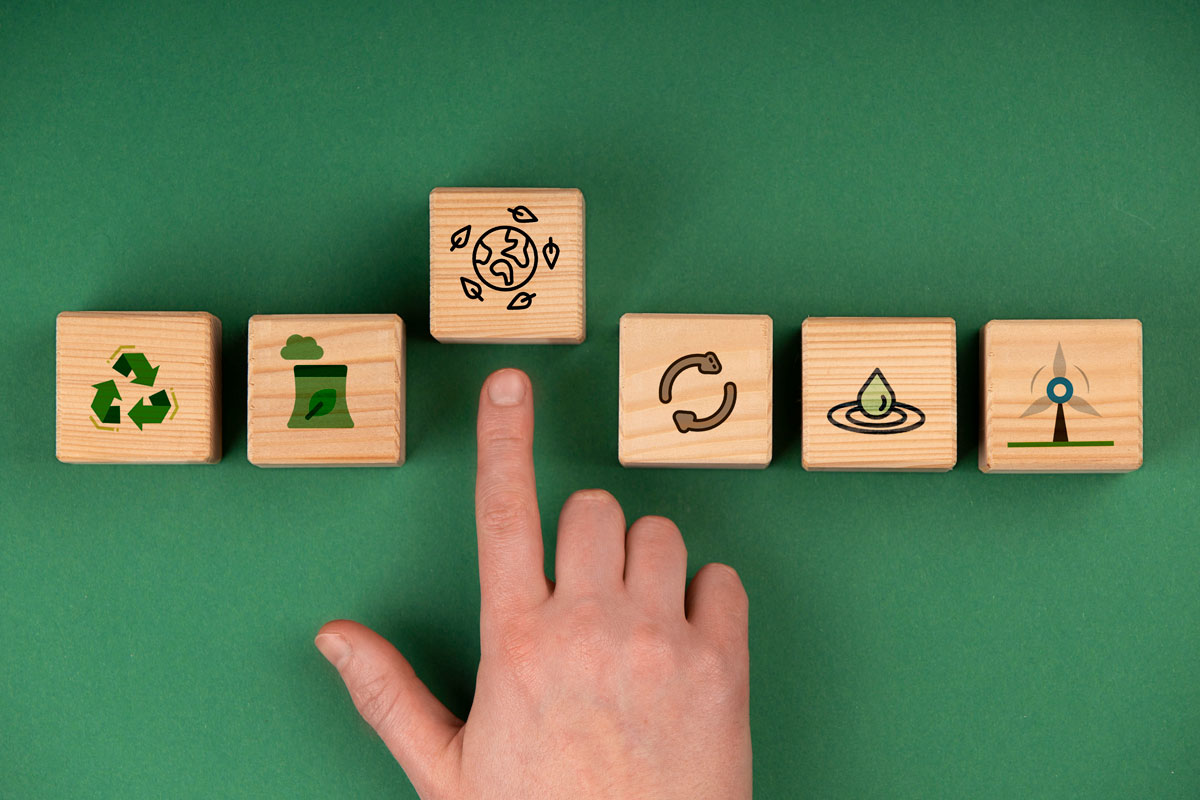
Publicado el 11 April, 2024
Currently, we find ourselves at a critical point in the history of humanity and the planet. The way we have been extracting, consuming, and discarding resources has led to an unprecedented “triple crisis” in the environment: climate change, loss of biodiversity, and pollution. These challenges not only pose a threat to ecosystems but also endanger the survival and well-being of present and future generations. In this context, the circular economy emerges as a new business model, proposing a radical change in the way we produce, consume, and manage resources.
Unlike the traditional linear model of “extract, manufacture and dispose,” the circular economy seeks to minimize waste and maximize the use of resources (materials and products) for as long as possible. This transition towards circularity is not only necessary to face current environmental challenges but also offers significant economic opportunities, promoting innovation, efficiency and sustainability.
In the last five years, the circular economy has transcended the realm of environmental initiatives to position itself as a global megatrend, reflecting a significant shift in the way society perceives and addresses the use of resources and waste management. However, despite efforts and growing awareness of the importance of the circular economy, reality shows that we are still far from achieving a truly circular economic model. According to the Circle Economy Foundation, the circular economy is gaining popularity but is falling short in action, where global circularity has decreased from 9.1% in 2018 to 7.2% in 2023, which is undoubtedly a wake-up call about the urgency of accelerating the transition towards more sustainable practices.
The magnitude of the problem is further aggravated when we consider the accelerated pace of consumption over the last five years. During this period, we have consumed more than 500 gigatonnes of materials, which represents 28% of everything consumed since 1900. This acceleration in consumption, combined with a decrease in the application of circular practices, puts us on an unsustainable trajectory that threatens to exceed planetary boundaries and exacerbate the effects of the triple planetary crisis.
Faced with this scenario, the circular economy emerges not only as an option but as an imperative necessity for the 21st century. This circular economic model, which seeks to maximize benefits for humanity while minimizing pressure on natural systems, demands a systemic transformation that involves governments, private enterprise, and civil society in a joint effort.
For the circular economy to move from being a megatrend to a globally integrated practice, a coordinated effort involving all actors in society is required. This includes the adoption of public policies that encourage circular practices, the commitment of the business sector to redesign products and processes, an increased awareness and participation of consumers in sustainable consumption models, and education and training in circular principles and practices to cultivate a sustainability-oriented mindset in future generations.
Circular Economy Strategies and Solutions
The three pillars – Reduce, Reuse, Recycle: While it’s common to hear about up to 11 R’s, the essence of the circular economy is encapsulated in the original three R’s: reduce, reuse, and recycle. Reduce implies designing products and production systems in a way that minimizes the consumption of materials and energy. Reuse focuses on extending the useful life of products through repair, refurbishment, or reassignment to new functions, thus avoiding their disposal as waste. Recycling involves processing used materials to create new products, closing the life cycle of resources and reducing the need for new material extraction.
Design for Circularity: Products should be designed not only with functionality and aesthetics in mind but also their ability to be disassembled, repaired, and recycled. This includes choosing materials that are durable, recyclable, or biodegradable, and simplifying the processes of disassembly and component separation.
Business Models Based on Circularity: These models include systems where consumers access services instead of owning products, promoting reuse and waste reduction. Examples include vehicle leasing, return and refill programs for containers, and clothing rental platforms.
Infrastructure for Circularity: This includes efficient collection and recycling systems, processing facilities, and digital platforms for the exchange and sale of used goods. Collaboration among governments, businesses, and consumers is essential to create logistic networks that support circularity.
Education and Awareness: Awareness campaigns can motivate consumers to choose sustainable products and participate in recycling and reuse practices. Education can foster a new generation of designers, engineers, and entrepreneurs focused on sustainability.
Policies and Legislation: This can include tax incentives for sustainable businesses, regulations that require eco-friendly product design, and grant programs for research in sustainable technologies and materials.
Adopting the circular economy represents a crucial strategy to reverse the current trend of exceeding planetary boundaries and limiting global warming to a 2°C increase. The challenge lies not only in increasing circularity rates but in doing so in a way that fits the needs and capacities of different regions and economic sectors around the world, each with its own peculiarities and challenges.
The transition to a circular economy represents one of the most significant challenges and, at the same time, one of the greatest opportunities to effectively address the triple environmental crisis we face, through the transformation of how we produce, consume, and manage our resources. Implementing circular strategies and solutions, we can aspire to a more sustainable and resilient future.
Although the circular economy has gained ground in recent years, the gap between theory and practice remains wide. However, global initiatives and experiences demonstrate that there are viable and effective paths to incorporate circular principles into our economy, product design, business models, and public policies.
The time to act is now. Adopting a circular approach is not just a matter of environmental sustainability but also of long-term economic and social survival.
